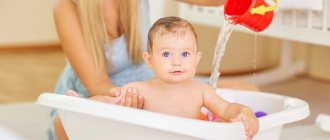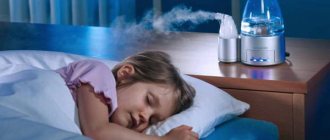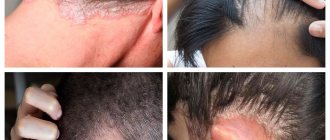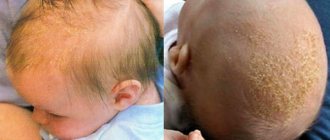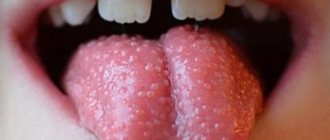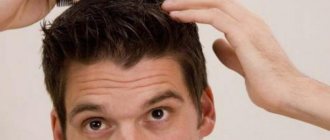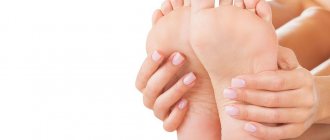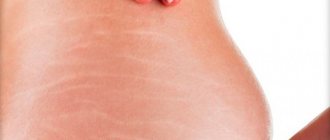05/27/2021 Reading time: 5 min 18206 0
By the end of the first month of life or a little later, yellowish crusty scales can be noticed on the baby’s scalp. They can frighten and upset a mother who is unprepared for such a phenomenon, but meanwhile there is nothing terrible about them. Milk crusts, which actually have nothing to do with milk, occur in many children under one year old. In medical terminology, they are called seborrheic dermatitis, physiological seborrhea or gneiss.
Crusts on a child’s head: reasons for their appearance
The reasons for the appearance of seborrheic dermatitis (gneiss) on the heads and behind the ears of newborn babies have not yet been fully established. However, most pediatricians associate the occurrence of “milk crusts” with:
diseases of the maternal gastrointestinal tract during gestation;- lack of vitamins and unsaturated fatty acids;
- abuse during pregnancy of products containing obligate allergens (chocolate, nuts, citrus fruits, honey, etc.);
- as well as the immaturity of the baby’s sweat and sebaceous glands;
- too delicate skin in infants;
- and increased sebum production in some cases.
It happens that gneiss occurs as a reaction to a specific allergen. Or during treatment with antibiotics. Crusts can also occur if a nursing mother has eaten a lot of sweets. In these cases, the baby’s condition worsens: redness and peeling “spread” to the face, neck, and ears. The child becomes restless, begins to spit up frequently, and, in addition, he may develop diarrhea.
How to choose a shampoo and will it help?
The easiest way to get rid of crusts is to apply baby shampoo to your baby's scalp and leave it on for 5-10 minutes while bathing. The crusts will become softer. Some of them will be washed off during rinsing, some will come off when you dry the child’s head with a towel, the rest will need to be carefully combed out with a soft brush or a comb with rounded teeth at the ends. If there are few crusts, then one or two such procedures will be enough. If there is a lot, then more.
To combat crusts, any baby shampoo approved for use from the first days of a child’s life is suitable. But if you wish, you can purchase a special shampoo for milk crusts. Will it be more effective than regular? Read the reviews. For some it helps immediately, for others it doesn’t help at all. If the baby has a lot of crusts and layers, then most likely the shampoo will not give a quick effect. Other remedies for crusts To combat profuse manifestations of seborrheic dermatitis, oil products are suitable: children's cosmetic oil, special oil gel against crusts, emollient cream. Half an hour to an hour before bathing, smear the child’s head with this product and put a hat on him. While bathing, wash your baby's hair with baby shampoo, and then comb it with a soft brush or blunt-tooth comb.
It is important!
One procedure may not be enough. After a few days, if necessary, it can be repeated. Do not overdo it. Using shampoo every day will dry out your baby's scalp and make his sebaceous glands work even harder. That is, the effect will be the opposite: there will only be more crusts.
If you notice that under the scabs your baby’s skin is red, begins to get wet, and bleeds, consult a doctor. It is also worth showing your baby to the doctor if crusts cover not only his head, but also his face, neck, and groin.
So:
- Crusts on the baby’s head are formed due to the intense secretion of sebum under the influence of maternal hormones, as well as due to the activity of Malassezia fungi, which are present on the skin of every person.
- It is not necessary to remove milk crusts, but they will take a long time to disappear.
- You can choose any shampoo to combat milk crusts, the main thing is that it is approved for use from the first days of life. The use of a special shampoo against milk crusts does not guarantee a complete and quick effect.
- You can remove milk crusts using baby oil. To do this, you need to apply it under your cap an hour before bathing, and then rinse with shampoo and carefully comb out the crusts with a soft brush.
- If these remedies do not help, and crusts appear not only on the head, but also on the child’s face and body, consult a doctor.
(1 ratings; article rating 5.0)
Share Share Share
How to remove crusts from a child's head?
In order for seborrheic scales to quickly disappear from the baby’s head, it is necessary to properly care for the baby’s skin:
- Do not rip off or scratch the golden-yellow crusts under any circumstances. This is painful and can cause injury to the delicate epidermis. In addition, under the greasy flakes, inflamed, red areas may open up and are easily accessible to infection.
- When bathing your baby, carefully wash his hair with a special detergent that has passed appropriate tests and does not contain alkalis, dyes or prohibited ingredients. For example, baby shampoo for sensitive skin “ Ushasty Nyan ” with extracts of celandine and viburnum produced by JSC “Nevskaya Kosmetika”, which:
- gently cleanses both hair and skin;
- suitable for washing hair with areas of redness, irritation, and peeling;
- ideal for babies with particularly sensitive epidermis;
- creates lush foam and does not sting the eyes;
- has a natural pH level;
- makes the child's hair shiny and manageable for combing;
- moisturizes and softens delicate baby skin;
- maintains water-fat skin balance.
- Immediately after water procedures, very carefully remove (comb out with a blunt-toothed comb) loose, soaked scales. Those that have not moved away should not be touched.
Important: The fontanelle is the most sensitive place on a baby’s head. And the skin here needs cleanliness and natural ventilation. Therefore, gneiss from the fontanel must be removed. But this must be done extremely carefully.
Diagnostics
Based on the test results, the pediatrician refers the baby to specialized specialists: an allergist, endocrinologist, gastroenterologist, dermatologist, trichologist (a specialist in diseases of the scalp and hair), who, in turn, may require additional information about the baby’s health status.
Tests used to make a diagnosis:
- an extended blood test - an increased content of eosinophils in it will indicate the allergic nature of the disease, and leukocytes and ESR - to any inflammatory process in the body;
- blood test for hormones - will allow you to see hormonal imbalances;
- blood test for allergens (if necessary) - will determine which foods or substances cause a reaction in the baby;
- urine test - will indicate problems in the excretory system, inflammation, poisoning;
- stool analysis - a coprogram informs about the absence or presence of dysbacteriosis in the child’s intestines; analysis for parasites will determine whether the baby is infected with a helminthic infection;
- dermatoscopy - performed with a special device (dermatoscope), prescribed for an objective assessment of the degree and nature of changes in the structure of the skin.
- scraping, examination of a sample of affected tissue - will determine a fungal, bacterial, parasitic infection;
- spectral analysis of hair - gives the most complete picture of the general condition of the body: the level of vitamins and minerals in it, the course of metabolic processes;
- Ultrasound of the abdominal organs - determines the condition of the liver, kidneys, stomach, pancreas, intestines, etc.
Light forms of gneiss are classified as physiological phenomena. Doctors, as a rule, differentiate severe forms of seborrheic dermatitis in infants with fungal skin diseases or atopic dermatitis (a special form of allergy, found mainly in young children).
How to remove crusts on a child’s head - the easiest way
If you want to get rid of crusts on a newborn’s head as quickly as possible, you need to use one proven effective method - before bathing (15-20 minutes), lubricate the baby’s skin with a cosmetic product that has emollient and anti-inflammatory properties. For example, the gentle baby cream “Eared Nanny” with alpha-bisabolol, allantoin, peach and olive oils, as well as calendula flower extract. This is a means of production that:
- quickly and effectively relieves any irritation from children's skin;
- nourishes, softens, moisturizes and soothes sensitive epidermis very well;
- spreads over the skin easily and quickly;
- does not contain alcohol, dyes, or other prohibited ingredients;
- restores the natural hydrolipidic skin barrier.
After using the cream, you need to put a cap on the child's head. Then the gneiss will soften and can be easily removed during washing. In 2-3 procedures (the recommended frequency of such cleansing activities for infants is once a week) you can completely get rid of the manifestations of seborrheic dermatitis.
If you don’t have a highly effective professional cosmetic product at hand, you can use slightly warmed, pre-boiled vegetable oil for spreading - olive, burdock or even petroleum jelly. This remedy should also help, although it may not be as fast.
Important: If, a short time after disappearance, the gneiss returns again, we are most likely talking about exudative-catarrhal diathesis or an allergic reaction of the child’s body to some strong irritant. You will need to consult a dermatologist and an allergist, who will probably prescribe clinical and biochemical blood tests, as well as a general urine test.
Seborrheic dermatitis in children
Treatment of infants in typical cases is limited to the use of medicinal cosmetics. To loosen and painlessly remove crusts on the head, creams with salicylic acid, special shampoos and warm oil compresses are recommended 30-40 minutes before bathing. Treatment with products with a keratolytic effect allows you to quickly remove excess layers of sebaceous gland secretion and cleanse the skin on the head.
The second component of treatment for seborrheic dermatitis is adequate hydration and nutrition of the dermis in order to restore the protective water-lipid barrier and normalize the functioning of the sebaceous glands. For care, special children's dermatological creams are applied, the formula of which contains vegetable oils, wound-healing and sebum-regulating components. In complicated cases, treatment is supplemented with pharmaceuticals. The therapeutic regimen usually includes:
- Topical corticosteroids
. Ointment formulations with minimal concentrations of hormonal substances are prescribed to children starting from 4-6 months, if the seborrheic process progresses and cannot be treated with standard creams and shampoos. They use corticosteroids that are not absorbed into the bloodstream and do not cause adverse reactions. - Antibiotics
. Antimicrobial ointments and creams are indicated when seborrheic lesions are localized in skin folds, which is accompanied by weeping and a high risk of pyoderma. The drugs are prescribed for 5-7 days when the process worsens. Combination products with hormones and antibiotics are popular. - Antihistamines
. If dermatitis is combined with intense swelling of the skin, itching (which is manifested by restlessness and constant crying of the child), oral medications that quickly relieve symptoms are effective. Their action is aimed at eliminating the immune component of seborrheic inflammation. - Pyrithione-zinc
. Aerosols and shampoos with this active component have sebum-regulating, anti-inflammatory and antimycotic effects. They are recommended for children after 1 year of age to control the symptoms of dermatitis and prevent relapses.
Treatment of dermatosis in adolescents follows similar principles. The main difference in the therapeutic regimen is the active prescription of antifungal shampoos, which inhibit the growth of Malasseiza and other pathogenic pathogens of mycotic infections on the head. During puberty, antihistamines and antiallergic systemic drugs must be used to eliminate painful itching.
Drug treatment is complemented by lifestyle corrections. Teenagers are advised to limit food intake with extractives, dyes and flavors. To avoid irritating the skin, avoid wearing synthetic clothing and using aggressive laundry detergents. It is important to maintain a comfortable psychological environment in the family in order to minimize stress in the child. Sometimes treatment must be supplemented with psychotherapy.
